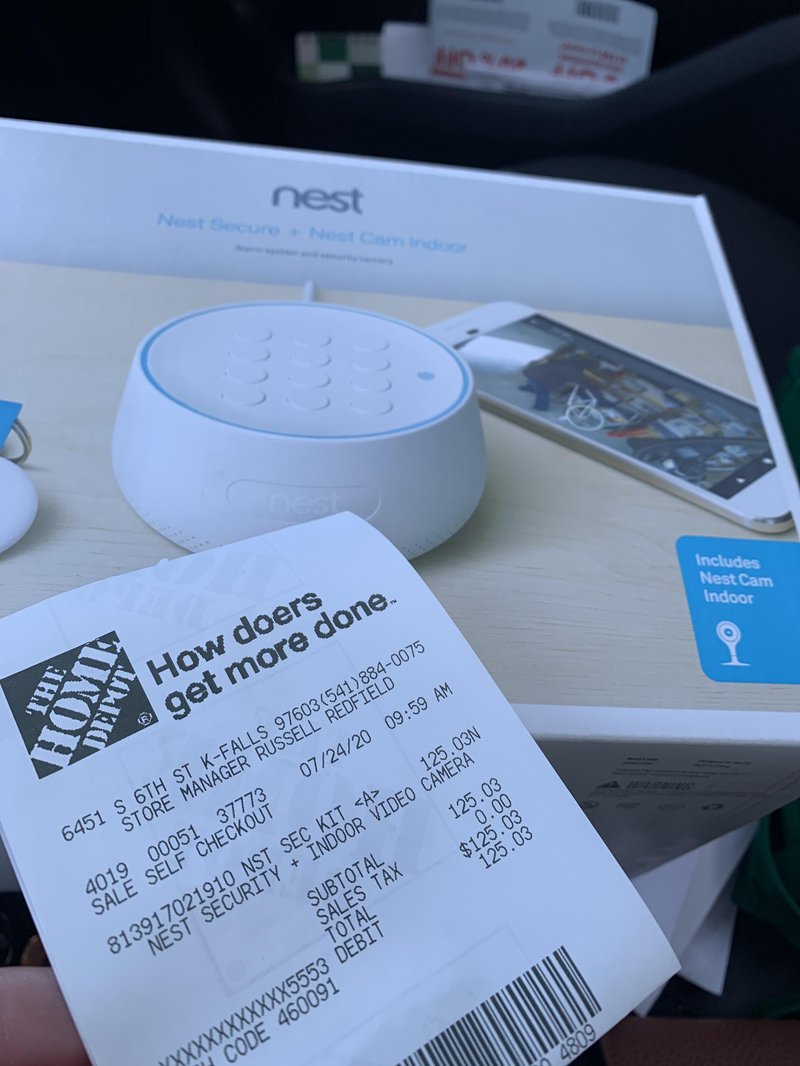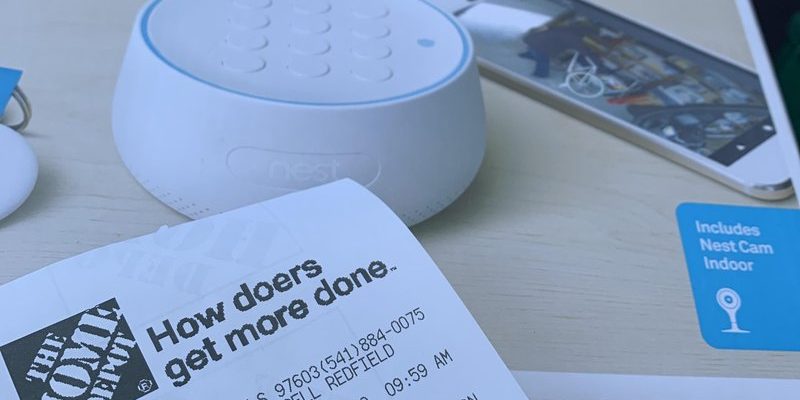
Imagine you just bought a shiny new Nest thermostat or a Nest Hello doorbell. You’re excited to get it set up, syncing your phone to control everything with a tap. But then, a question pops into your mind: Do I actually need the receipt to register this device? It’s a bit like buying a concert ticket and wondering if you need the paper stub to get inside—sometimes it’s obvious, sometimes not so much.
When it comes to Nest smart home devices, registration isn’t just a formality. It’s a way to unlock all the smart features, get firmware updates, and even protect your investment with warranty coverage. But the path to registration can feel confusing, especially if you’re new to smart home tech or if you bought the device used or as a gift. So, let’s slow down and unpack what you really need before you start pairing your Nest devices with the Google Home app.
How Nest Device Registration Works: The Basics
First off, Nest devices are tightly woven into Google’s smart home ecosystem. When you register a device, you’re basically telling Google’s servers, “This thermostat, camera, or doorbell belongs to me.” This registration process links your device to your Google account and unlocks features like remote monitoring, scheduling, and alerts.
Here’s the thing: Nest registration mostly relies on the device’s serial number or setup code, which is physically on the device or its packaging. Unlike some products that may require a receipt to prove purchase before activating a warranty or support, Nest’s registration focuses on the device itself. So, in most cases, you actually don’t need the receipt just to register the device in the app.
However, the receipt can be handy for other important reasons, like warranty claims or troubleshooting help with Google support. Think of the receipt as your ticket to customer service perks, but not necessarily the key to getting started.
Why Do Some People Think You Need A Receipt to Register?
You might have seen forum posts or support pages where users worry about needing a receipt before they can register a Nest product. Honestly, this confusion usually comes from mixing up registration with warranty validation or proof of purchase. They serve different purposes, but people tend to lump them together.
When you register your Nest device in the Google Home app, the process asks for the setup code found on the device. This code lets Google verify ownership and link the device to your account. But if something goes wrong—like a hardware malfunction or a lost device—then the receipt becomes important to prove when and where you bought it.
Also, some retailers or resellers might require a receipt for returns or exchanges if you bought the device recently. That’s not the same as Nest’s registration, but it can add to the muddle if you’re trying to get things sorted out quickly.
How To Register Your Nest Device Without A Receipt
Let me explain how to get your Nest device up and running, step by step, without breaking a sweat over receipts.
- Find the setup code: This is usually a QR code or a 6-digit code on the device itself or its original packaging.
- Open the Google Home app: If you don’t have it yet, download it on your smartphone or tablet.
- Add a new device: Tap the “+” icon, select “Set up device,” then “New devices.”
- Scan or enter the code: When prompted, scan the QR code or manually enter the setup code.
- Follow on-screen instructions: The app will guide you through connecting your device to Wi-Fi and finalizing the setup.
Throughout this process, the app only asks for information related to your Google account and the device’s setup code—not your purchase details. So, you can complete registration without the receipt just fine.
When You Really Do Need The Receipt: Warranty and Support
Here’s where that piece of paper (or digital invoice) becomes more than just clutter. If you run into hardware problems or need to file a warranty claim, Nest or Google support might ask for your proof of purchase. This helps verify that your device is still covered under warranty and wasn’t stolen or used improperly.
The warranty period for Nest devices typically lasts one or two years, depending on the product and region. Without a receipt, it might be challenging to prove the purchase date, making support and replacements more complicated.
That said, if you registered your device immediately after buying it, Google often uses your account’s registration date as a fallback to approximate warranty validity. Still, having the receipt close by makes everything smoother.
What If You Bought A Used Nest Device? Does That Change Things?
Buying used or secondhand Nest devices is pretty common—maybe you snagged a great deal on a Nest Cam or a thermostat at a yard sale or online marketplace. But this raises valid concerns: do you need the receipt to register these devices? Unfortunately, the answer is a bit tricky.
Because Nest devices are tied to Google accounts through registration, a device that’s still linked to someone else’s Google account won’t register under yours until it’s factory reset. Even then, some sellers might not provide a receipt, making warranty claims impossible for you.
Basically, if the previous owner didn’t remove the device from their account, you might hit roadblocks trying to pair or register it again. A receipt or proof of purchase can act as evidence that you legitimately own the device, which matters if you need support.
Resetting and Pairing Used Nest Devices
To pair a used Nest device, you’ll need to do a factory reset, which removes the old Google account association. Here’s how in a nutshell:
- Locate the reset button (usually a pinhole or press-and-hold button).
- Hold it for 10-20 seconds until the device restarts.
- Open Google Home and follow the setup steps as if it’s new.
Once reset, if the device isn’t under any account, you can register it with your Google account—no receipt needed for this step. But without a receipt, warranty support remains an issue if something breaks.
Tips to Keep Your Nest Device Registration Stress-Free
Honestly, the easiest way to avoid receipt worries is to register your Nest devices right after purchase. This way, you’re the first owner recorded, and Google’s system tracks your device under your account.
If you still have your receipt, hold onto it—digital photos or scanned copies work just fine. It’s your safety net for warranty claims and support. Also, always buy from trusted sellers to make sure the device isn’t locked to another account.
Remember, registration is mostly about the setup code, device serial number, and your Google account. The receipt is your backup in case something goes sideways. So, treat it like your digital receipt or warranty card—important, but not always front and center.
How To Troubleshoot Registration Problems Without A Receipt
If you’re stuck trying to register your Nest device and you don’t have a receipt, don’t panic. Here’s how to troubleshoot common issues:
- Check for factory reset: Make sure the device isn’t still linked to someone else’s account. Performing a reset helps.
- Verify setup code: Double-check the code you’re entering matches exactly what’s on the device or box.
- Confirm Wi-Fi connection: Nest devices need a strong, stable Wi-Fi signal to register and sync.
- Update the Google Home app: Older app versions sometimes cause pairing glitches.
- Restart devices: Power cycle your Nest device and your phone to clear temporary bugs.
If these tips don’t work and you don’t have a receipt, you might need to contact Google support. They can sometimes verify ownership through your Google account’s registration date, but it’s more straightforward if you have proof of purchase handy.
Wrapping It Up: Receipts Are Helpful, But Not Always Required
So, do you need a receipt to register your Nest smart home devices? The short answer is no. Registration mainly depends on your device’s serial number and setup code, paired with your Google account. You don’t have to wave a receipt around just to get your thermostat or camera working.
That said, having the receipt in your digital or physical drawer is a smart move. It’s your proof of purchase for warranty support and customer service if something goes wrong. Especially if you buy used devices, a receipt can save you headaches later.
In the end, the Nest ecosystem is designed to be user-friendly and straightforward—register your device quickly, keep your receipt safe, and enjoy the convenience of a truly smart home.
